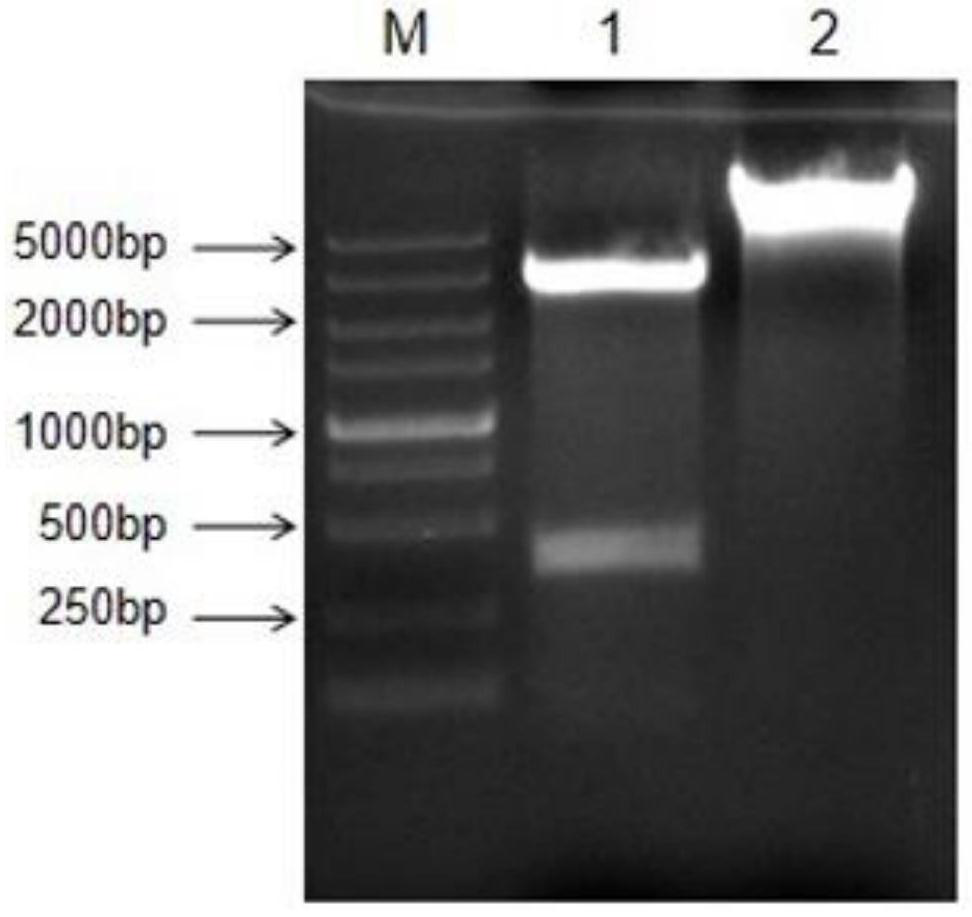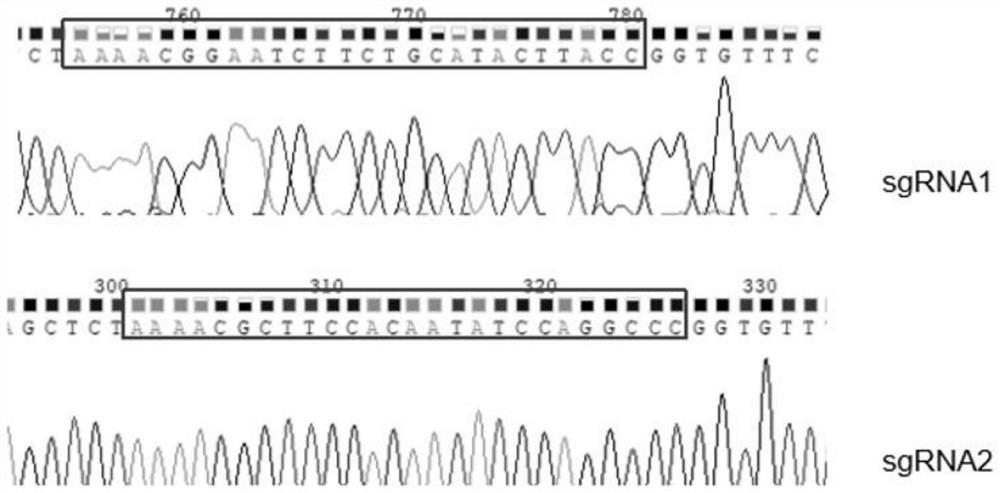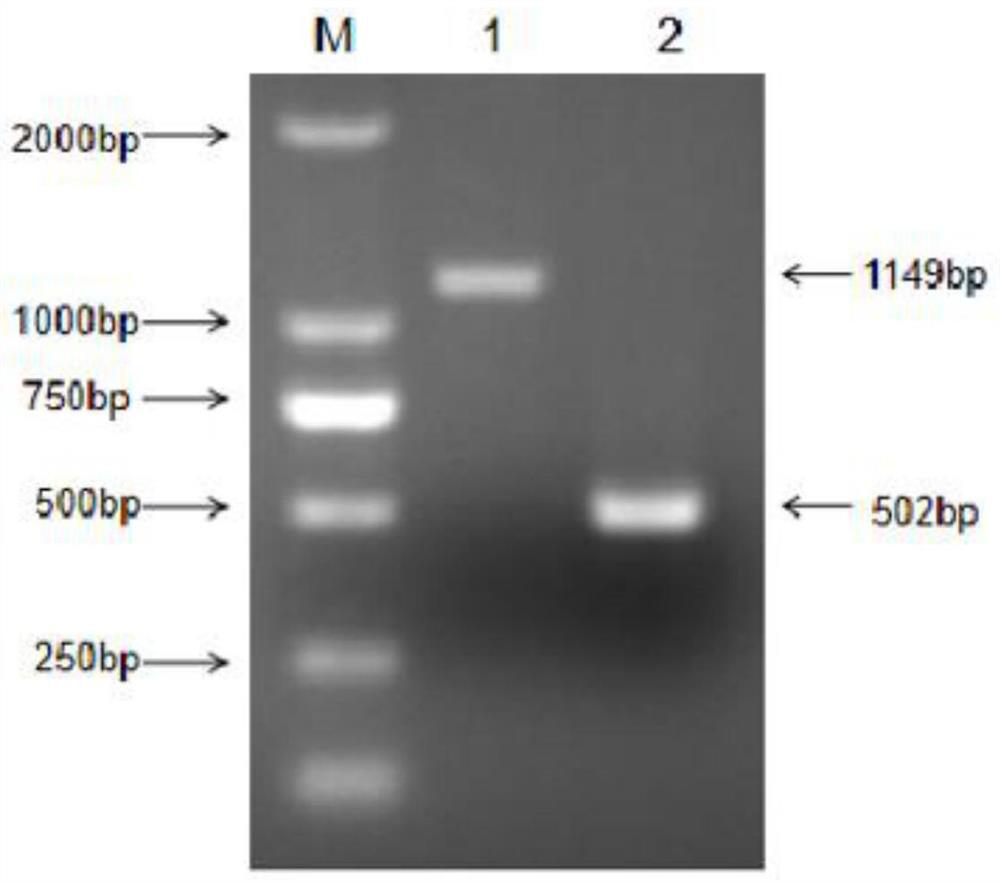Porcine MLKL gene deletion cell strain capable of promoting proliferation of pseudorabies virus and application of porcine MLKL gene deletion cell strain
A gene deletion and cell strain technology, applied to genetically modified cells, cells modified by introducing foreign genetic material, viruses, etc., can solve problems that are difficult to control and eradicate, and achieve the effect of promoting proliferation and virus proliferation
- Summary
- Abstract
- Description
- Claims
- Application Information
AI Technical Summary
Problems solved by technology
Method used
Image
Examples
Embodiment 1
[0036] Example 1 Construction and screening method of a pig-derived MLKL gene-deleted cell strain that can promote the proliferation of pseudorabies virus
[0037] 1. Materials and methods
[0038] Cells, viruses and plasmids: Porcine kidney epithelial cells (PK-15) were purchased from China Center for Type Culture Collection (Wuhan University), collection number: GDC0061; PRV Bartha-K61 vaccine strain (PRVBartha-K61) was purchased from From the China Veterinary Microbial Culture Collection Management Center, preservation number: CVCC AV249; PRV GD-WH strain (PRV GD-WH) isolated and preserved from the Pig Disease Laboratory of the Institute of Animal Health, Guangdong Academy of Agricultural Sciences; Escherichia coli Trans10 competent cells purchased From Addgene Company; CRISPR / Cas9 vector plasmid pX459 pSpCas9-2Apuro-MCS and auxiliary vector plasmid EZ-GuideXH were purchased from Addgene Company.
[0039]Reagents and antibodies: Restriction endonucleases BbsⅠ, HindIII and ...
Embodiment 2
[0061] Example 2 Analysis of the promoting effect of pig-derived MLKL gene-deleted cell lines on PRV proliferation
[0062] Infect PK-15 and PK-15MLKL-KO cells with PRV GD-WH and PRV Bartha-K61 at MOI=10, respectively, and place at 37°C, 5% CO 2 The incubator adsorbed for 1h. After the adsorption, the inoculum was discarded, the cells were washed 3 times with PBS, and replaced with maintenance medium for culture. The cell supernatant virus liquid was collected according to different time points of 12h, 24h, and 36h, the virus liquid was repeatedly frozen and thawed three times, the supernatant was obtained by centrifugation, and the supernatant was diluted 10 times, respectively, and infected with PK-15 cells in a 96-well plate , observed 4 days after virus infection, and recorded the lesions of each well. The PRV GD-WH strain and PRV Bartha-K61 strain titers of each supernatant were determined according to the Reed-Muench method.
[0063] The result is as Image 6 with ...
PUM
 Login to View More
Login to View More Abstract
Description
Claims
Application Information
 Login to View More
Login to View More - R&D Engineer
- R&D Manager
- IP Professional
- Industry Leading Data Capabilities
- Powerful AI technology
- Patent DNA Extraction
Browse by: Latest US Patents, China's latest patents, Technical Efficacy Thesaurus, Application Domain, Technology Topic, Popular Technical Reports.
© 2024 PatSnap. All rights reserved.Legal|Privacy policy|Modern Slavery Act Transparency Statement|Sitemap|About US| Contact US: help@patsnap.com










